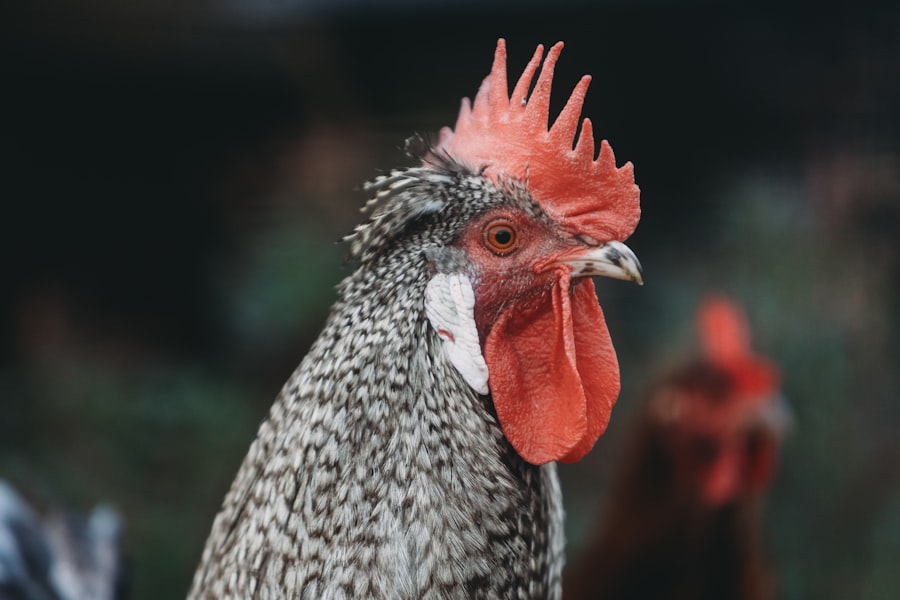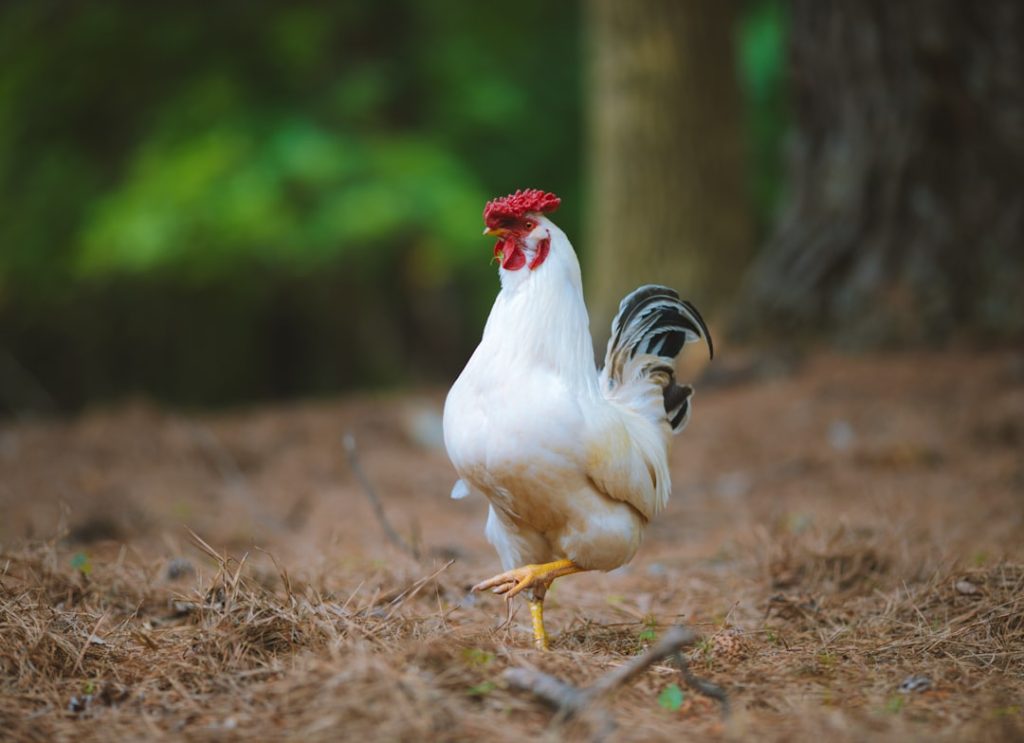Mixing chicken breeds offers several advantages for poultry enthusiasts. One primary benefit is hybrid vigor, or heterosis, which occurs when two different breeds are crossed. The resulting offspring may display enhanced traits such as increased egg production, improved disease resistance, and better overall health.
This can result in a more robust and productive flock, particularly beneficial for those raising chickens for eggs or meat. Crossbreeding also allows for the creation of unique and visually appealing birds. The process can produce a wide variety of colors, patterns, and feather types, leading to a diverse and attractive flock.
Furthermore, mixing breeds contributes to the preservation and promotion of rare or endangered breeds, as well as the development of new breeds better suited to specific climates or production purposes. Mixing breeds can also promote a more sustainable and environmentally friendly approach to chicken farming. By enhancing genetic diversity through crossbreeding, poultry enthusiasts can help mitigate the risk of inbreeding and associated health issues in purebred populations.
This contributes to the long-term health and viability of chicken populations and the overall sustainability of poultry farming practices. Additionally, creating more resilient and adaptable birds through crossbreeding may reduce reliance on antibiotics and other interventions, leading to a more natural and eco-friendly approach to chicken farming.
Table of Contents
Key Takeaways
- Mixing breeds can result in healthier and more resilient chickens with a diverse genetic makeup
- Considerations for mixing breeds include compatibility, purpose of breeding, and potential for genetic disorders
- Popular mixed breeds include the Easter Egger, Olive Egger, and Sex Link
- Breeding practices for mixed breeds should prioritize genetic diversity and careful selection of parent stock
- Health and care for mixed breed chickens should include regular health checks, proper nutrition, and a clean living environment
Considerations for Mixing Breeds
Unpredictable Traits in Mixed-Breed Offspring
When crossing two different breeds, it can be difficult to predict which traits will be inherited from each parent. This unpredictability can result in a wide range of physical characteristics, behaviors, and production qualities in the offspring, which may not always align with the breeder’s goals or expectations.
Increased Management and Care Requirements
Mixed-breed birds can exhibit a wide range of traits and behaviors, requiring more individualized care and attention compared to purebred birds. This may include specialized feeding programs, unique housing requirements, and tailored health management practices to ensure the well-being and productivity of the flock.
Potential Health Risks in Mixed-Breed Chickens
It’s crucial to consider the potential for breed-specific health issues when mixing breeds. Some breeds may carry genetic predispositions to certain diseases or conditions, which could be passed on to their mixed-breed offspring. Breeders should be aware of these potential health risks and take proactive measures to monitor and manage the health of their mixed-breed flock.
Popular Mixed Breeds

There are several popular mixed breeds of chickens that have gained popularity among poultry enthusiasts for their unique traits and characteristics. One example is the “Easter Egger,” a crossbreed known for its colorful eggs that can range from blue and green to pink and brown. Easter Eggers are typically a mix of Ameraucana or Araucana chickens with other breeds, resulting in a diverse range of egg colors and patterns.
Another popular mixed breed is the “Black Sex Link,” which is created by crossing a Rhode Island Red or New Hampshire rooster with a Barred Plymouth Rock hen. The resulting offspring typically exhibit excellent egg-laying abilities, with hens laying large brown eggs consistently throughout the year. Black Sex Links are also known for their friendly and docile temperament, making them a popular choice for backyard flocks.
The “Golden Comet” is another well-known mixed breed that is created by crossing a White Rock or Rhode Island Red rooster with a White Plymouth Rock hen. Golden Comets are prized for their high egg production, with hens laying large brown eggs at an impressive rate. They are also known for their friendly and easygoing nature, making them a popular choice for novice chicken keepers.
Breeding Practices for Mixed Breeds
When it comes to breeding mixed breeds of chickens, there are several important practices to keep in mind to ensure the health and viability of the offspring. One key practice is to carefully select parent stock with desirable traits that align with the breeder’s goals. This can include traits such as egg production, temperament, feather color, and overall health.
By choosing parent stock with complementary traits, breeders can increase the likelihood of producing offspring with the desired qualities. Another important breeding practice is to carefully manage genetic diversity within the flock. This can help reduce the risk of inbreeding and the associated health issues that can arise in mixed-breed populations.
Breeders should aim to introduce new genetic material into their flocks regularly through the addition of new parent stock or by collaborating with other breeders to exchange genetic material. Additionally, it’s important for breeders to carefully monitor the health and well-being of their mixed-breed flock throughout the breeding process. This can include regular health checks, proactive disease management practices, and appropriate nutrition and housing to support the overall health and productivity of the birds.
Health and Care for Mixed Breed Chickens
When it comes to caring for mixed breed chickens, there are several important considerations to keep in mind to ensure their health and well-being. One key aspect of care is providing a balanced diet that meets the nutritional needs of the birds. This can include a high-quality commercial feed supplemented with fresh fruits and vegetables, as well as access to clean water at all times.
Another important aspect of care is providing appropriate housing and living conditions for mixed-breed chickens. This can include a secure coop or housing structure that protects the birds from predators and provides adequate ventilation and space for movement. Additionally, providing access to outdoor areas for foraging and dust bathing can help promote the overall health and well-being of mixed-breed chickens.
Regular health checks are also essential for maintaining the well-being of mixed-breed chickens. This can include monitoring for signs of illness or injury, as well as proactive measures such as vaccination and parasite control to prevent common health issues in poultry populations.
Challenges of Mixing Breeds

Unpredictable Traits
One of the biggest challenges of working with mixed-breed chickens is the potential for unpredictable traits in the offspring. Because mixed-breed chickens inherit traits from two different breeds, it can be difficult to predict which traits will be expressed in the resulting offspring. This can make it challenging for breeders to achieve specific goals or standards when working with mixed-breed populations.
Health Risks
Another challenge is the potential for breed-specific health issues in mixed-breed chickens. Some breeds may carry genetic predispositions to certain diseases or conditions, which could be passed on to their mixed-breed offspring. Breeders should be aware of these potential health risks and take proactive measures to monitor and manage the health of their mixed-breed flock.
Managing Genetic Diversity
Managing genetic diversity within mixed-breed populations can also be a challenge for breeders. It’s important to carefully monitor and manage genetic diversity within the flock to reduce the risk of inbreeding and maintain the overall health and viability of the population. By being aware of these potential challenges, breeders can take steps to overcome them and create healthy, thriving mixed-breed chickens.
Is Mixing Breeds Right for You?
In conclusion, mixing breeds of chickens can offer a wide range of benefits, including hybrid vigor, unique visual characteristics, and sustainability in poultry farming practices. However, there are also important considerations and challenges to keep in mind when working with mixed-breed chickens, including unpredictable traits in offspring, increased management requirements, and potential health issues. Ultimately, whether mixing breeds is right for you will depend on your specific goals, resources, and level of experience as a poultry enthusiast.
If you’re interested in creating unique and visually appealing birds with enhanced traits such as increased egg production or disease resistance, mixing breeds may be a good fit for you. However, if you have specific goals or standards that require predictable traits or uniformity in your flock, you may find working with purebred populations to be a better fit. Regardless of your decision, it’s important to approach breeding practices with careful consideration for the health and well-being of the birds involved.
By following best practices for breeding, care, and management, poultry enthusiasts can create healthy, productive flocks that contribute to the long-term sustainability of chicken farming practices.
If you’re considering mixing breeds of chickens in your coop, it’s important to consider the layout and design of your coop to ensure that all the chickens have enough space and resources. Check out this article on chicken coop interior ideas for tips on creating a comfortable and functional living space for your mixed flock. Additionally, you may want to explore chicken coop run plans to provide ample outdoor space for your chickens to roam and exercise. And if you’re looking for a fun and innovative way to keep your mixed flock entertained, consider adding a chicken coop trampoline to their environment.
FAQs
What are the benefits of mixing breeds of chickens?
Mixing breeds of chickens can result in a more diverse gene pool, which can lead to healthier and more resilient birds. It can also create unique and visually appealing chickens with a variety of colors and patterns.
What are some potential drawbacks of mixing breeds of chickens?
Mixing breeds of chickens can result in unpredictable traits and behaviors, making it difficult to predict the characteristics of the offspring. Additionally, some purebred enthusiasts may prefer to maintain the integrity of specific breeds.
How do you mix breeds of chickens?
To mix breeds of chickens, you can simply allow different breeds to intermingle and breed naturally. Alternatively, you can selectively cross specific breeds to achieve desired traits in the offspring.
What are some popular mixed breeds of chickens?
Some popular mixed breeds of chickens include the “Easter Egger,” which is a cross between Ameraucana and other breeds, and the “Black Sex Link,” which is a cross between a Rhode Island Red rooster and a Barred Plymouth Rock hen.
What should I consider before mixing breeds of chickens?
Before mixing breeds of chickens, consider the specific traits and characteristics you are looking to achieve in the offspring. It’s also important to research the potential health and behavioral implications of mixing specific breeds.
Meet Walter, the feathered-friend fanatic of Florida! Nestled in the sunshine state, Walter struts through life with his feathered companions, clucking his way to happiness. With a coop that’s fancier than a five-star hotel, he’s the Don Juan of the chicken world. When he’s not teaching his hens to do the cha-cha, you’ll find him in a heated debate with his prized rooster, Sir Clucks-a-Lot. Walter’s poultry passion is no yolk; he’s the sunny-side-up guy you never knew you needed in your flock of friends!







